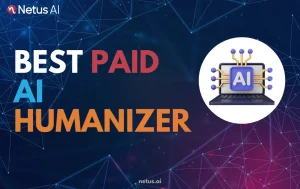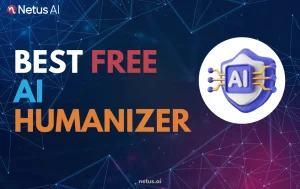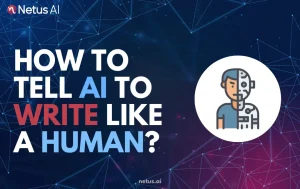
Why Students Are Getting Flagged Even When Writing Honestly | NetusAI
Learn how students can use AI tools for writing and research without getting flagged by AI detectors. Get tips on humanizing content and staying academically safe.

Content writer and editor for Netus.AI
Your Guide to Copyright Laws in India. Copyright law serves as a means of protecting the rights of intellectual property owners, offering them exclusive control over the reproduction and distribution of their original creations. It ensures that only those authorized by the original creators have the right to reuse the work. It is essential to note that copyright laws protect the expression of ideas rather than the ideas themselves.
In India, the perspective on copyrights is similar to that of other nations, ensuring that creators have legal rights over their intellectual properties. The Indian judiciary has played an essential role in upholding these rights and addressing any instances of copyright infringement. Understanding copyright infringement and using copyright checkers can help individuals avoid unintentional legal violations.
The Indian Copyright Act of 1957 provides protection for various types of creative works, ensuring financial and moral benefits for their creators. It covers original literary, musical, dramatic, cinematographic, artistic, and sound recording works, giving copyright owners exclusive rights.
Importantly, registration is not required in India to grant copyright. The copyright is automatically granted when the work is created and exists in tangible form. While the registration process is optional, it mainly serves as a formal record, not providing any additional privileges or rights to the registered work.
Plagiarism and copyright infringement are two distinct concepts, although both involve improperly using someone else’s work. Plagiarism refers to the act of using another person’s ideas or words without proper attribution. It is considered unethical and a violation of academic standards. In contrast, copyright infringement is an illegal act that involves unauthorized copying of copyrighted material.
While plagiarism is an ethical issue primarily affecting the original author, copyright infringement is a legal issue affecting the copyright holder. In academic publishing, copyright transfer agreements are commonly used to regulate the use of copyrighted material.
To prevent plagiarism, one should provide appropriate intellectual validation. On the other hand, copyright is focused on preserving the revenue streams for the copyright holders. The main differences between these two issues can be summarized in the following points:
By understanding these distinctions, individuals can better navigate the complex world of intellectual property and academic publishing.
The Indian Judiciary has taken a firm stance in addressing copyright infringement cases. Having a clear understanding of Section 51 of the Copyright Act, the court holds liable those who permit communication, distribution, sale, or display of infringing work, except when done unknowingly or without reason to suspect infringement. As such, the judiciary’s approach ensures stringent enforcement of copyrights and offers protection to the rightful owners of artistic works.
Copyright infringement occurs when an individual or entity reproduces, distributes, or uses a copyrighted work without the permission of the copyright holder. This unauthorized use violates the exclusive rights granted to the copyright holder for a specific period.
Infringement of copyright can happen through various means, such as:
In addition to primary infringement, secondary infringement occurs when someone imports, possesses, or reuses an infringing copy without the necessary authorization.
When a copyright owner discovers infringement, they have two courses of action: civil remedies and criminal complaints. Civil remedies may include:
For criminal complaints, Section 63 of the Copyright Act (1957) specifies that intentional infringement or incitement of copyright violation may result in imprisonment for a term of six months to three years and a fine of Rs. 50,000 to Rs. 2,00,000, depending on the severity of the case. Repeat offenders may face extended imprisonment terms and increased fines.
To avoid copyright infringement, individuals and organizations can obtain an IRRO reprographics license, which provides blanket coverage and minimizes potential expenses and risks associated with copyright violations. By adhering to copyright laws, people can respect the rights of creators and contribute to a fair and just intellectual property ecosystem.
To effectively avoid copyright infringement, consider adopting these strategies:
By following these guidelines, one can respect and uphold the rights of others’ creative works, striking a balance between fair use and infringement in various settings, such as research and education.
Utilizing a copyright checker enables individuals to thoroughly analyze their work for originality before publishing, thus mitigating the risk of plagiarism. Copyright checkers play a vital role in education by informing students about consequences of plagiarism and the importance of adhering to copyright regulations. Educators can help students understand these implications, effectively preparing them for both their academic careers and future professional endeavors.
Efficient copyright checkers, such as Copyleaks, provide convenience to users by quickly identifying plagiarized content and offering suggestions for improvement. They operate by:
Moreover, these checkers evaluate paraphrasing efficacy by highlighting sections that closely match the original text and may require proper citation. This allows writers to correct potential issues proactively and maintain content integrity.
In summary, copyright checkers assist users in ensuring originality, navigating copyright rules, and fostering responsible content creation by addressing essential aspects such as information, access, application, and review.
To register your work under the Copyright Act, 1957 in India, you must prepare scanned copies of your work and your personal details, such as your name, address, and the work’s title. Familiarize yourself with the specific category that applies to your work, as different categories may have distinct requirements.
Indian copyright law protects various types of works, including literary, artistic, musical, cinematographic, sound recordings, software, and photographs.
The duration of copyright protection in India varies depending on the type of work involved. For literary, musical, artistic, and photographic works, the copyright generally lasts for the lifetime of the author plus 60 years. In the case of cinematographic films, sound recordings, and software, protection lasts for 60 years from the date of publication.
In India, when multiple authors create a work together, they become joint owners of the copyright. The rights are shared equally among all collaborators, unless a specific agreement states otherwise.
Copyright infringement in India occurs when someone uses or copies a copyrighted work without the permission of the rights holder. This can include unauthorized reproduction, distribution, public display, or adaptation of the work.
Indian copyright law has certain limitations and exceptions that allow for the use of copyrighted material without permission. These include:
Remember to consult a legal professional for specific advice tailored to your situation when dealing with copyright matters in India.

Learn how students can use AI tools for writing and research without getting flagged by AI detectors. Get tips on humanizing content and staying academically safe.

Explore the best paid AI humanizer tools that deliver high-quality, undetectable content. Compare pricing, features, and accuracy to choose the right solution for your needs.

Looking for the best tools to make AI content undetectable? Explore top AI humanizers, bypass tools, and rewriting solutions to pass detectors and sound fully human.

Explore why AI content humanization is essential for SEO success. Learn how human-like rewrites can improve rankings, engagement, and trust with search engines.

Discover the best free AI humanizer tools to make your content sound natural and bypass AI detection. Compare features, pros, and limitations of top free options.

Learn how to prompt AI tools to write like a human. Discover techniques to improve tone, structure, and emotion in AI-generated content for better authenticity and SEO.
@ 2024 Netus AI.